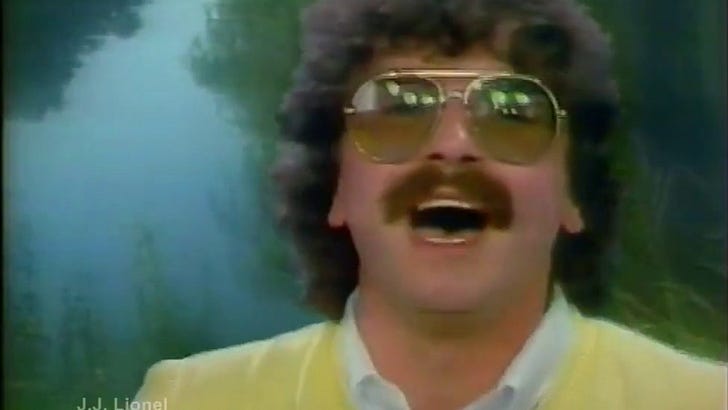Flap, Clap, Repeat: How France Made the Chicken Dance Inevitable
How a Swiss Accordion Tune, a French Duck Dance, and American Weddings Created an Inescapable Ritual
I want to start by saying: I don’t like this song. No, “hate” is not too strong a word. I’ve listened to at least twenty versions in the past few days, and now it’s stuck in a permanent loop in my head.
I do this for you, readers.
And yet, I’ve seen it work, I’ve seen thousands of people leap up at weddings and fairs, clapping, flapping, grinning, moving through a ritual so bizarre and familiar it barely feels like a choice. The Chicken Dance isn’t just a bad song. It’s a checkpoint, stitched into the larger, wobbling patchwork of modern ceremonies.
Like most rituals, it had to come from somewhere.
In this case, it came from France—or almost.
La Danse des Canards by J.J. Lionel (1980)
J.J. Lionel’s La Danse des Canards sold over 3 million singles in its first year, becoming the best-selling single in French history. It spread worldwide, translated into 40 languages, recorded in over 140 versions, selling more than 40 million.
It remained popular and he performed it many times over the years - this is from 2017.
You’ve come a long way, baby.
In that video, everyone knows the song - and maybe they’re even having fun. The professional dancers flapping beside him probably studied ballet, tap, jazz, modern dance - only to end up here.
Lionel released a few more novelty tracks, including 1982’s Moi je dois faire pipi (“I have to go pee”), but he never escaped the shadow of that flapping, quacking juggernaut.
Moi je dois faire pipi JJ Lionel - 1981
Thanks for reading!
flap
In the 1990s, I worked 186 weddings in upstate New York—cater waiter, line cook, wrangler of hors d’oeuvres, occasional flaming pig escort. I did whatever paid for school, and after a while, the steady chaos of banquet work became addictive. Numbers felt more real than memories.
To be clear, these places were Wedding Factories. I worked between 3 of them and, once I got a reputation (he shows up; he shows up sober), the work was steady.
Most weddings unfolded predictably: heavy drinking at the open bar, the bride and groom cheered in by an overcaffeinated DJ, fumbled hors d’oeuvres, a clumsy first dance, rushed dinners, ninety minutes of flailing on the dance floor, the inevitable Chicken Dance, a final round of coffee and bad decisions, and then headlights disappearing into the night—while I stood there in wine- and coffee-soaked polyester, wondering how to get my laundry done before doing it all again the next day.
Every wedding played the Chicken Dance—even the ones where the bride had banned it. As one DJ explained, shrugging at a furious bride, "The people want what they want."
And what they want is the Chicken Dance.
flap
It started in 1950s Switzerland, where accordionist Werner Thomas wrote a little tune called Der Ententanz after watching ducks on a frozen pond. At first, it was just a melody—no lyrics, no flapping, no existential despair.
You could even say it was inspired by nature. It was popular and Der Ententanz was an accordion hit of the Swiss summers.
In the 1970s, Belgian producers gave it a remake: new title (La Danse des Canards), cheerful lyrics, and, by 1981, a hit recording by J.J. Lionel that sent France into a national flap.
That same year, it crossed the Atlantic to an Oktoberfest in Tulsa, Oklahoma.
Without a duck costume, organizers grabbed a chicken suit and that all it took to create The Chicken Dance.
flap
In peak season, I averaged three weddings a weekend, but sometimes as many as five of them from Thursday to Sunday. That’s 62 weekends of open bars, cheap champagne, misplaced vegetarian plates, bread pudding, and relatives screaming along with “Sweet Caroline.”
Sixty-two weekends of The Chicken Dance.
Weddings rarely surprised. The first dance was almost always Endless Love, My Heart Will Go On (which, yes, is a strange choice if you think about it), or I Swear for the real romantics. Sometimes a Phil Collins ballad snuck in through the side door.
Most couples just swayed in tight little circles, clinging to each other like shipwreck survivors.
A few would try something choreographed, usually after a series of basic lessons at Arthur Murray. People clapped away no matter what they did.
Nobody cared. The drinks were paid for.
clap
Once in a while, you'd get Can You Feel the Love Tonight (yes, The Lion King) or Against All Odds (which didn’t scream optimism)—but that never stopped anyone from slow-dancing..
Unusual first dances happened maybe 10% of the time, if that. One couple picked November Rain by Guns N' Roses, and we talked about it for months. They had a live band and, it seemed, less control over them than they'd planned.
Most first dances last about three minutes—just long enough for the photos. Even the dramatic ones get faded out early.
November Rain runs 8:57. By minute six, the couple looked trapped—just standing out there, blinking, while the band tore through the orchestral gloom and into a full guitar inferno.
The bride and groom stopped dancing, frozen in the middle of the dancefloor, as if hoping someone would pull the plug. No one did.
The band couldn’t be stopped—and no one even tried.
clap
Father-Daughter dances had predictable tearjerkers: Butterfly Kisses, My Girl, or Isn’t She Lovely (faded out before the harmonica solo).
The Mother-Son dances were Wind Beneath My Wings or In My Life. Cake cutting meant How Sweet It Is (Marvin Gaye version, good; James Taylor version, bad).
Then Girls Just Want to Have Fun for the bouquet toss, with a stampede of tipsy bridesmaids.
This was before Spotify, before Napster, even. Upstate DJs ran on muscle memory and binders of overplayed CDs and crates of records.
You didn’t get surprises.
You got tradition, routine, and The Chicken Dance.
Sometimes twice.
Have I missed anything?
I must have missed a few. I also have no idea what music is played at a French wedding.
repeat
The Chicken Dance wasn’t designed to be a ritual, but it’s as old as most American wedding "traditions"—recent inventions stitched together to fill awkward gaps, soothe nerves, or sell something.
"Giving away" the bride, tossing the bouquet, the garter throw, diamond rings—all mid-20th-century creations, propped up by marketing and momentum. Even the white wedding dress only dates back to Queen Victoria.
As weddings ballooned into bigger, louder spectacles, new rituals kept piling on—like the Cake Smash—until it all needed something simple to hold it together.
The Chicken Dance arrived right on time, just as DJs replaced live bands and weddings became productions in the 1980s.
It’s easy and people need something to do and the quacking bit does solve the “what do I do with my hands?” part of dancing for some.
The more it was played, the more it had to be played.
At some point, you’re not doing the Chicken Dance—you’re just trying not to be the only one standing still.
At some point, you’re the weird one if you’re not doing it.





Keith - so great! Thank you - Spending a lot of my youth around Pittsburgh, where every wedding seemed to include it, I just assumed the chicken dance was either Polish or Italian because of the large immigrant communities there. French?! Who knew!?